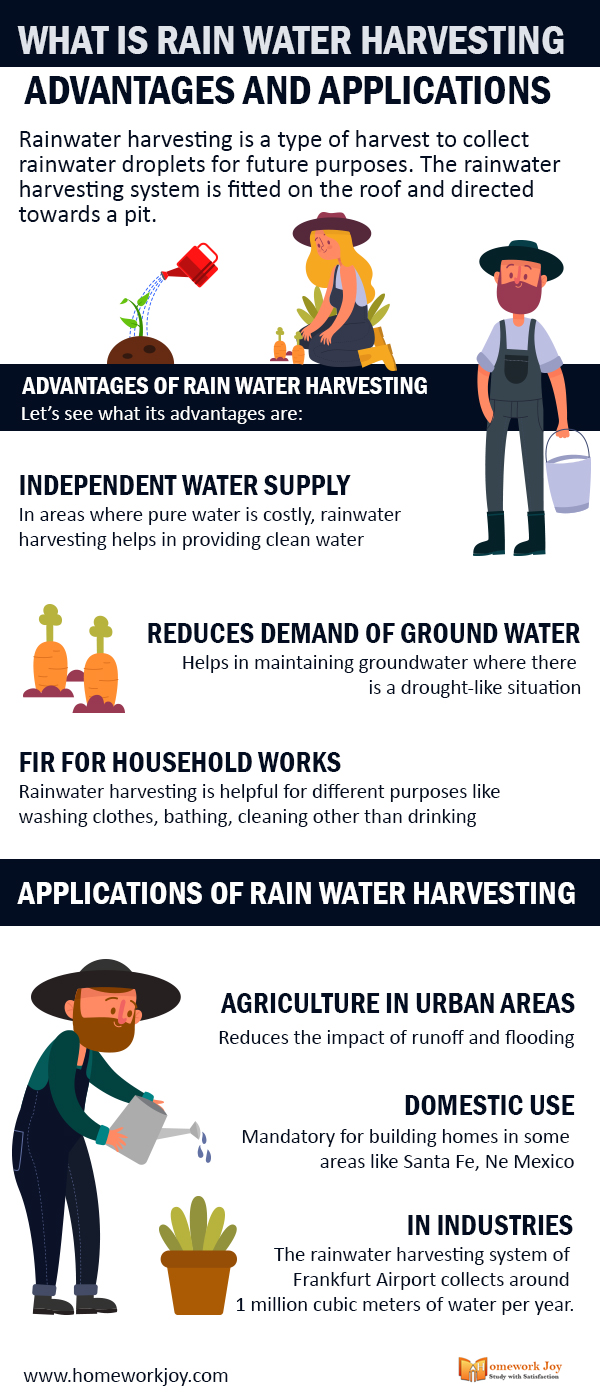Rainwater harvesting is a type of harvest to collect rainwater droplets for future purposes. The rainwater harvesting system is the technology that collects water. Thus the system is fitted on the roof and directed towards a pit. After purification, the collected water can be used for household purposes or in our daily life. However, the water is not fit for drinking purposes. Rainwater harvesting is the perfect technique to save groundwater and deplete water in densely populated areas.
Rainwater is a natural source of water. If you need to know more about natural resources, check out the below posts:
Now let us proceed to know more about rainwater harvesting.
Advantages of Rain Water Harvesting
The guide explains rainwater harvesting advantages in depth. Here they are:
Independent Water Supply
In areas where pure water is costly, rainwater harvesting helps in providing clean water. Also, rainwater harvesting as a pure water supply provides clean water to densely populated areas or where there is a drought-like situation.
Reduces Demand of Ground Water
Rainwater harvesting systems help in maintaining groundwater in drought areas. When we dig deeper wells for groundwater, it causes environmental damages like soil erosion, etc. Thus rainwater harvesting helps in maintaining water availability in the soil.
Fir for household works
Rainwater harvesting is helpful for different purposes like bathing, cleaning, toilet purposes, for growing crops, and so on. However, the water collected through rainwater harvesting system is unfit for drinking purposes. Rainwater is soft and takes less detergent to wash clothes. Thus it is best to wash clothes.
Applications of Rain Water Harvesting
Rainwater harvesting is essential in these modern days, where the whole world is facing water scarcity. Some of its applications are:
Agriculture in Urban Areas
Reduces the impact of runoff and flooding. The water collected through rainwater harvesting is best for agriculture purposes since there is no need to clean it. Do you know why? Rainwater has both soluble and insoluble components which it collects from the land when it flows down the earth’s surface. So it contains organic and inorganic substances that are fit for agricultural purposes.
Domestic Use
For using rainwater collected from harvesting, it needs to be purified first. As already mentioned above, it has various insoluble substances like metal, chemicals, and minerals. Mandatory for building homes in some areas like Santa Fe, Ne Mexico.
In Industries
The rainwater harvesting system of Frankfurt Airport collects around 1 million cubic meters of water per year. In larges cities like Mexico, large industries are no longer dependent upon municipalities for water supply since they have their own rainwater harvesting system. However, particularly in the western United States, rainwater collected is seen as the right water issue. Thus, restrictions are placed in such areas.
So these were critical points about rainwater harvesting along with its applications and benefits. If you need to learn more about it, get instant online assignment help from our experts in just one click.
